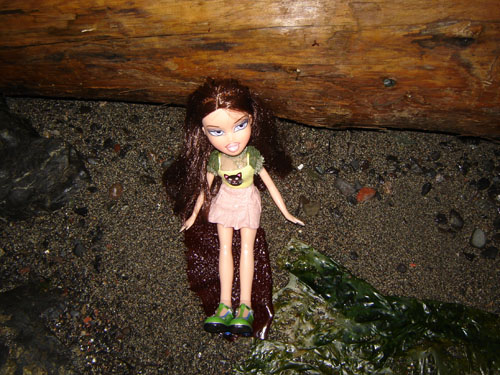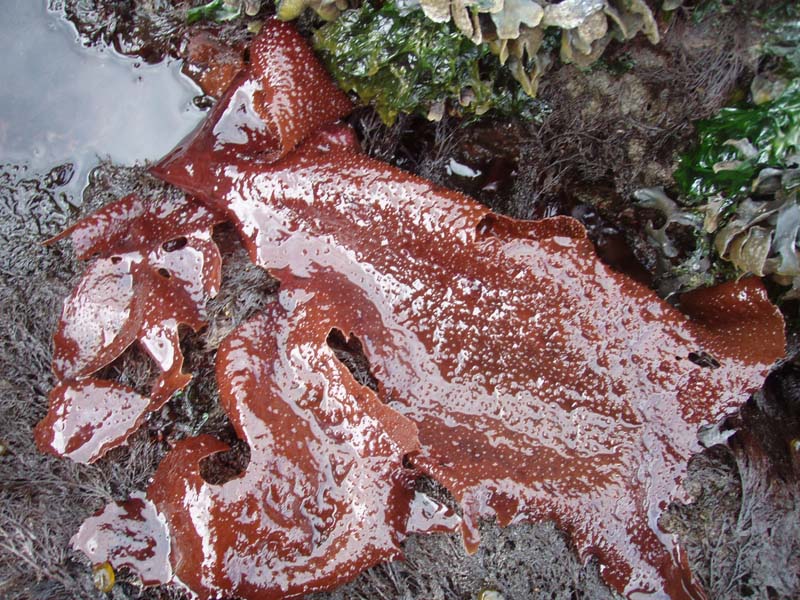
Ecology
Martha chooses her "Turkish Towel" over Ulva at the beach
C. exasperatus with its many neighboring species, such as Fucus, Ulva. and Polysiphonia, at Rueben Tarte |
|
Chondracanthus exasperatus is generally a low-intertidial turf species within the kelp forest community, which consists of crusting algae species, turf species, understory canopy species and canopy species (Hommersand et. al., 1993) . Among these four groups, encrusting and turf species are less likely to be removed by a storm, but are outcompeted for light by the upper and lower canopy species. Some species deal with the lack of space by growing on one another as epiphytes and C. exasperatus is a common choice for epiphyte settlement, indicating that it likely lacks any kind of chemical defense against fouling. Animals also interact with the kelp forest community in both positive and negative ways. Numerous animal species live in the kelp forests but a couple examples are: seastars, fish, sea urchins, sponges, snails, kelp crabs, etc. The many interactions between these many species can have no effect or can be detrimental or benefical to the algae. For instance snails will eat alga tissues, but when the algae are young, the snails keep the blade clean of epiphytes allowing more light to reach the host algae, allowing for more growth. References: Hommersand, M. H., Guiry, M. D., Fredericq, S. and Leister, G. L. New perspectives in taxonomy of Gigartinaceae (Gigartinales, Rhodophyta). Proceedings of the International Seaweed Symposium 10:209-214, 1993.
|

